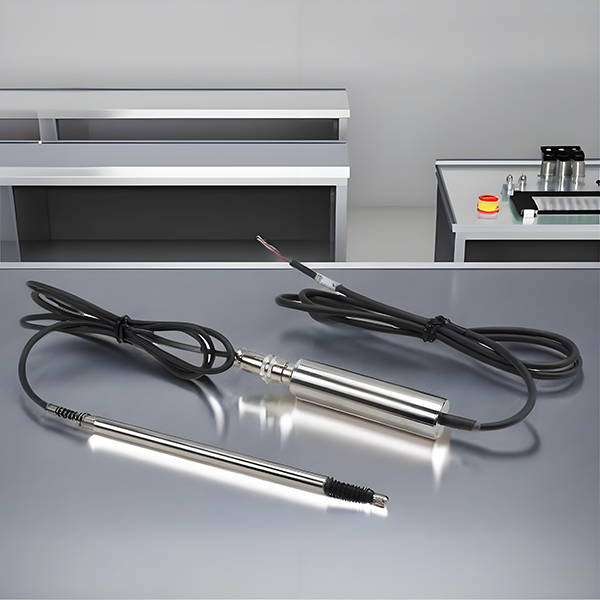An LVDT (Linear Variable Differential Transformer) transducer is an electromechanical device that translates linear motion into an electrical signal. Widely used in industrial applications, it offers high precision and reliability. Here’s a quick overview of its principle and operation.
Principle of LVDT Transducer
The basic principle of an LVDT is based on electromagnetic induction. It consists of three primary components: a primary coil, two secondary coils, and a movable ferromagnetic core.
Electromagnetic Induction: When an alternating current (AC) is passed through the primary coil, it generates a magnetic field. This field induces a voltage in the two secondary coils.
Differential Output: The two secondary coils are connected in series opposition, meaning they produce voltages that vary in response to the position of the core between them. When the core is centered, the induced voltages in the secondary coils are equal, and their output cancels out to zero. However, as the core moves, the voltage reading changes, providing a differential output proportional to the core’s position.
Working of LVDT Transducer
AC Excitation: The LVDT is powered by an AC source. This excitation voltage energizes the primary coil, creating a time-varying magnetic field.
Core Movement: As the ferromagnetic core moves linearly within the transformer, it changes the magnetic coupling between the primary and secondary coils. The position of the core directly affects the induced voltages in the secondary coils.
Voltage Output: The output voltage is proportional to the displacement of the core. If the core moves to one side, the voltage in one secondary coil increases while the voltage in the other decreases, creating a differential voltage output. This output is a linear function of the core’s position, which can be measured using appropriate signal processing.
Linear Measurement: By converting the voltage output into a readable signal, such as a digital readout or an analog signal, the position of the object being measured can be accurately determined.
Applications
LVDTs are versatile devices used in various applications, including:
Position Sensing: In automation and robotics for measuring linear displacement.
Aircraft Control Systems: For position feedback in hydraulic systems.
Industrial Automation: In quality control processes to maintain precise measurements.
Conclusion
LVDT transducers provide a reliable means to convert linear displacement into an electrical signal through the principle of electromagnetic induction. Their robust design and high accuracy make them invaluable in a multitude of applications, ensuring precise measurements in both industrial and commercial settings. Understanding their working principles helps in selecting the right transducer for your specific needs.

